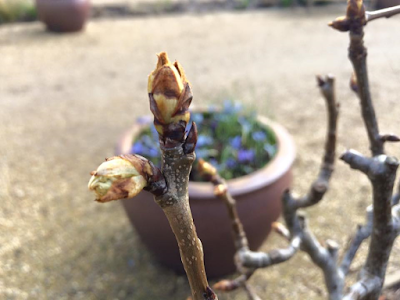Happy new year.
Looking back, its safe to say 2016 was a great year, although we lost our previous Head gardener to Helegan we still managed to build on previous success.
We had lots to be proud of, this included:
Our plant fair was the best ever with much increased footfall and coverage from BBC Radio Norfolk, we had more stall holders than ever and hope to improve on this even further in 2017. Please do join us on the weekend of 30th Sept - 1st Oct.
The Walled Garden hosted a large part of the offering for Halloween which turned out to be one of our busiest days ever in terms of footfall, we have never seen as many children, they made our 6 acres look much smaller.
We moved the garden on in terms of the level of plant care we were able to offer which is improving year on year. With help from local garden designers we created a long term planting plan which hopefully will give us a vision and direction to help focus our efforts.
We took the time to refresh the 2500 square meters of turf in our events space which proved to be a challenge at the time of year we had to execute this. However, this meant the space looked as good as it could for Weddings, Outdoor Theater and Cinema, the North Norfolk Food Festival and our annual Plant Fair, details of which can all be found on the Holkham Events page http://www.holkham.co.uk/events/whats-on which is updated regularly.
This year we started to sell plants once again from the walled garden, focusing solely on plants propagated from the walled garden with no stock bought in, this proved to be very popular and in the few months that we ran this scheme, we generated a modest but welcome income to re-invest into the garden. We plan to start this much earlier this year, double our selling space and make our stock more diverse to include, saved seeds, veg plants, surplus vegetables, annuals and bulbs.
Recognizing that we needed more help in the walled garden we ran a Volunteer Open day which enabled us to increase our Volunteer numbers by around 40%. This was a welcome shot in the arm and has made a noticeable difference to the standards and range of jobs we can now do in the walled garden. The new volunteers that joined us augment the exceptional people that already work with us and continue to cultivate the relaxed and friendly atmosphere that we insist on.
We welcome two new members of staff in Terrol Powers Richardson who previously worked at Chatsworth House in Derbyshire. Sarah Wainwright who also joined us came via the WRAGS scheme which is proving to be a very fruitful relationship.
Terrol
Sarah
We continued to work will local schools to nurture the next wave of budding horticulturalists, regular visits from Alderman Peel High School and Burnham Market Primary are now a mainstay and prove to work very well for all parties involved.
We spent a good portion of the year piecing together our Heritage Lottery Funding bid which we are due to submit early this year, A huge amount of time and research has gone into this bid and has been a great process to be involved in whatever the outcome. We hope to hear if we have been successful by the summer. Fingers crossed!
What will 2017 bring?
As I write this it is snowing outside and very, very cold, making the much warmer visitor season hard to envisage. As always we are forwards looking and pride ourselves in improving on the previous years efforts. To this effect we are aiming to provide more of our surplus vegetables to the Victoria Inn and improve the range of cut flower to be used by our Florists for the beautiful decorations in the hall.
We are in the process of creating a plant catalogue which should lead to a formal pruning schedule for all of our shrubs and fruit and make it easier for our non gardening staff to identify plants for customers.
We hope to continue the trend of increasing our visitor numbers to the walled garden in general but also for our tours and events.
Here's to another season of flowers, fruit and lovely people.


























